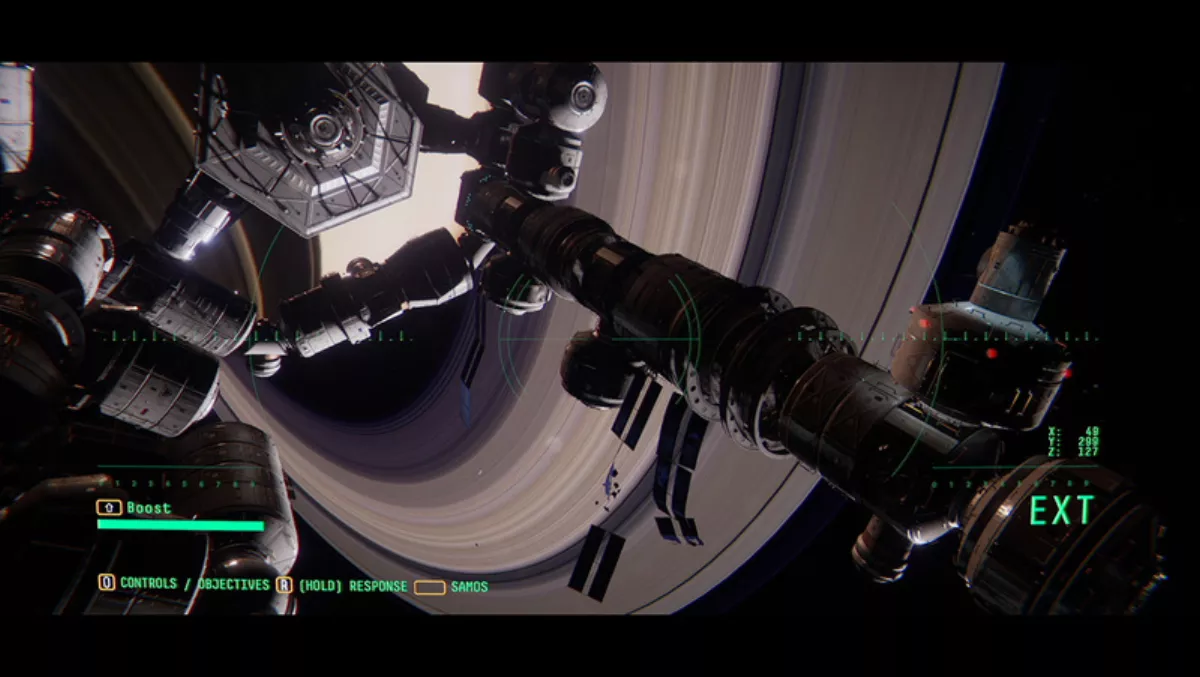PC game review: Observation
There's reason I'm writing this review for you and I'm not an astronaut instead. It has less to do with my lack of a previous career in the US Airforce or a specialist doctorate, and more to do with me watching far too many unnerving sci-fi movies in my formulative years, putting me off the idea for life.
Even today, I can't pass on any TV or movie that offers spooky goings-on in space. But still, the idea of being alone on a creaking spacecraft and getting a visitation from an alien intelligent scares the bejesus out of me.
Because of this, No Code's Observation is right up my alley.
The Scottish developers have already outdone themselves with their macabre 80s-style homage to the text adventure, Stories Untold. With Stories Untold, the developers pulled no punches when it comes to delivering a game featuring intelligent puzzles and chilling story-telling.
Observationcasts players in the unusual role of the on-board space station AI, called S.A.M. As the game starts the AI is rebooting after an incident of some sort. There's very little in the way of hints as to what to do. And this makes sense, as S.A.M.'s memory cores have been damaged.
Interactions with the space station and its occupants are via a series of prompts, which are really puzzles for the player. As you progress you start to understand how these interactions work.
Early in the game, S.A.M. interacts with Dr Emma Fisher, who may or may not be the lone survivor of the station. It is via Emma that you get your instructions. It soon becomes very clear that something very strange is happening with S.A.M. with strange apparitions apparently trying to communicate and ominous "BRING HER" message come up on your screen. Then there's the matter of what's happened to the rest of the crew.
I'm loathe to go into any real detail about the story, as it is a big part of the game. Think macabre mishap on board a space station, alien contact 2001-style, with a bit of The Arrival thrown in for good measure. Also, the space station is not where it should be.

The space station has been meticulously modelled by the developers, to a photo-real standard. It's absolutely stunning. It clearly based on the International Space Station; its long cylindrical compartment looks very authentic. As the station serves as our set for this adventure, this high level of detail adds to the game's immersion. The human model of Emma Fisher is not quite to the same level of fidelity, but is pretty close.
At first, S.A.M. "navigates" the various compartments of the station via the CCTV system. Each compartment has a number of cameras which can be cycled through. The cameras have a limited range of movement, and a zoom function. Items of interest sometimes need to be searched for in a manner that I found very much a throwback to point-and-click adventures of old. I think that this was very much the developer's intent.
S.A.M. can interface with most of the electronics on board the ship. Things like laptops can be connected by typing in access keys that appear once the connection is made. Laptops contain audio files which reveal what happened and sometimes data fragments that can be combined to aid other tasks.
During the game players interface with a number of the stations systems including crew trackers, comms equipment and the astrophysics terminal. Many of these involve mini-games/puzzles in order to unlock them. This blind navigation of pseudo-systems reminded me a lot of the 1980s game Hacker.
As the game progresses, S.A.M. gets access to a portable sphere unit, enabling players to traverse the station. Having already helped Dr. Fisher access sections of the station via the camera, players must now do the same for S.A.M. There is a station map that is invaluable for navigation.
Whilst the Space Station isn't particularly big, it is very maze-like, with different sections for US/EU, Russian and China. It's easy to get lost. Thankfully there's a waypoint function that helps.
S.A.M.'s duties also involve a rather breathtaking EVA to fix some external clamps. Again, it's a mini game, with no instructions. The developers have also modelled the external of the station with the same details as the interior.
The camera-feed-style visual are perfect for the game. Bump S.A.M.'s sphere into an obstruction and the picture distorts and flickers. This effect is also used for dramatic effect, reflecting the peculiar goings on. Observation is a very nice-looking game.

As the story unfolds, things start to get really eerie. Observation taps into the pre-Star Wars, proper science-fiction movie genre of the 1970s that relied on tension and suspense as opposed to action and spectacle. It's a game that has been masterfully crafted and one that people will be talking about for years to come.
I played the game over several nights, but didn't actually note my play time. I'd say it was no more than five hours. One you've completed it, there's not much point in going back to it. Saying that, I miss out on finding some of the voice files.
Whereas Stories Untold was a homage to text adventures, Observation is, at its heart, a point-and click-adventure with a heavy sci-fi story and some interesting, if not particularly taxing, puzzles.
It's not going to be a game for everyone, however, it's different enough for players yearning for something unique.
Verdict: 8.5/10


